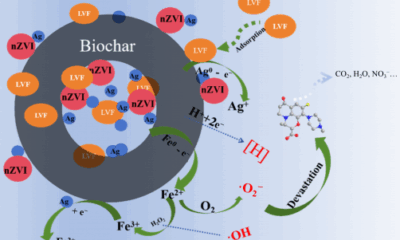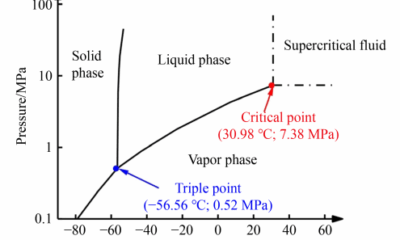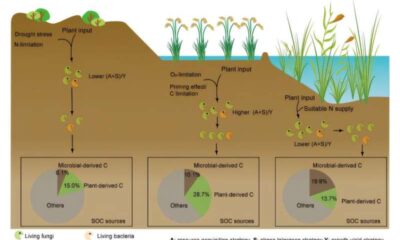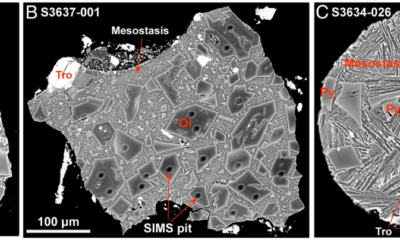Science
Researchers Uncover Factors Driving Microplastics’ Environmental Impact
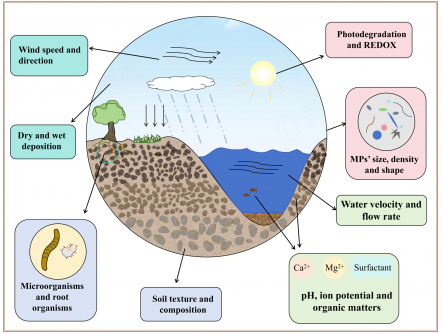
Microplastics (MPs), defined as plastic particles less than 5 mm in diameter, are increasingly recognized as pervasive pollutants in various ecosystems. A recent review by researchers, including Feifei Feng and Wenqi Ye from the Chongqing Institute of Green and Intelligent Technology and the Chinese Academy of Sciences, seeks to clarify the factors influencing the migration and distribution of these microplastics. This comprehensive study was published in the journal Frontiers of Environmental Science & Engineering in 2025.
The research highlights the extensive presence of microplastics across aquatic, terrestrial, and atmospheric environments. Classified by their chemical makeup, size, and origin, these pollutants pose significant risks to both ecosystems and human health. The review addresses critical issues such as bioaccumulation, composite pollution, and cross-media migration of microplastics, although the mechanisms behind these processes remain poorly understood.
Key Drivers of Microplastics Behavior
The authors systematically summarized the intrinsic properties of microplastics and various environmental factors that influence their behavior. Key characteristics of microplastics, such as size, shape, and aging state, play a crucial role in determining their ecological interactions. Environmental conditions, including hydrological parameters, soil texture, meteorological aspects, and biological interactions with microorganisms and root organisms, also significantly affect how microplastics migrate through different media.
This interconnected analysis reveals that the behavior of microplastics is driven by a complex interplay of factors. These influences dictate transport pathways, retention hotspots, and the long-term ecological implications of microplastic contamination.
Framework for Addressing Microplastics
A noteworthy outcome of this review is the establishment of a unified framework for understanding the environmental interactions of microplastics. The researchers propose several regulatory strategies aimed at mitigating the impact of these pollutants. Suggested approaches include source control measures, such as banning primary microplastics and developing biodegradable alternatives, alongside process interruptions through the use of constructed wetlands, biochar, and plant shelterbelts.
The findings from this review provide a significant contribution to the ongoing discourse on environmental pollution and offer actionable insights for policymakers and environmental scientists alike. For a more detailed examination of the study, the full paper is accessible at https://doi.org/10.1007/s11783-025-2062-z.
This research marks a crucial step towards understanding microplastics, fostering informed strategies to combat their pervasive presence in the environment.
-

 Technology4 months ago
Technology4 months agoDiscover the Top 10 Calorie Counting Apps of 2025
-

 Health2 months ago
Health2 months agoBella Hadid Shares Health Update After Treatment for Lyme Disease
-

 Health3 months ago
Health3 months agoErin Bates Shares Recovery Update Following Sepsis Complications
-

 Technology4 weeks ago
Technology4 weeks agoDiscover 2025’s Top GPUs for Exceptional 4K Gaming Performance
-

 Technology2 months ago
Technology2 months agoElectric Moto Influencer Surronster Arrested in Tijuana
-

 Technology4 months ago
Technology4 months agoDiscover How to Reverse Image Search Using ChatGPT Effortlessly
-

 Technology4 months ago
Technology4 months agoMeta Initiates $60B AI Data Center Expansion, Starting in Ohio
-

 Technology4 months ago
Technology4 months agoRecovering a Suspended TikTok Account: A Step-by-Step Guide
-

 Health4 months ago
Health4 months agoTested: Rab Firewall Mountain Jacket Survives Harsh Conditions
-

 Lifestyle4 months ago
Lifestyle4 months agoBelton Family Reunites After Daughter Survives Hill Country Floods
-

 Technology3 months ago
Technology3 months agoUncovering the Top Five Most Challenging Motorcycles to Ride
-

 Technology4 months ago
Technology4 months agoHarmonic Launches AI Chatbot App to Transform Mathematical Reasoning

